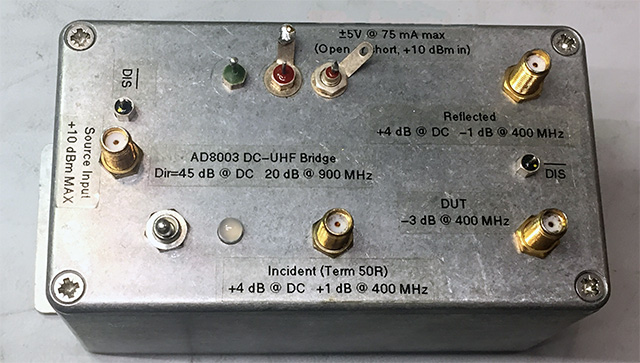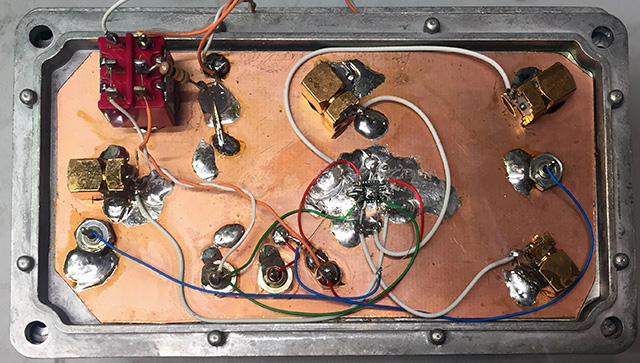Another quick question....since I'm looking at building it as a four port circulator, is there a reason to avoid just going with an IC that has four amps in one IC as opposed to four separate ICs? Is there more of a chance of signal leakage with the amps all being in one chip?
With the LMH6722 or LMH6733, crosstalk at 25 MHz will be in the -70 dB to -80 dB range (see figure 9 of the data sheet), so it will not dominate the isolation.
I'd favor the LMH6733 over the LMH6722 for this application,
unless you have a use for the fourth opamp. (edit: I see you want four ports, so, yeah.)
I'm not familiar with the LT139x family David mentions, but it looks fine as well. Not a fan of whatever those 'Manhattan' pads are that he mentioned, though, unless you just want to add some stray capacitance in random places. Current-feedback amps can be twitchy in that regard.
This bridge uses a very similar approach to Wenzel's,
as described by Sam Wetterlin (link is a mirror, Sam's site seems to have vanished):


If you use good opamps and good construction practices, the achievable performance from this class of circuit is pretty awesome. With the AD8003 that I used, the directivity is still 20 dB at 900 MHz(!). The LMH6733 performs similarly.